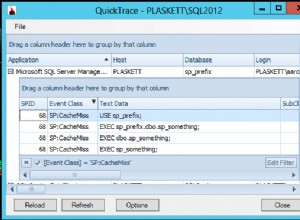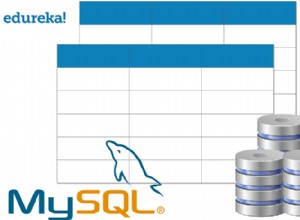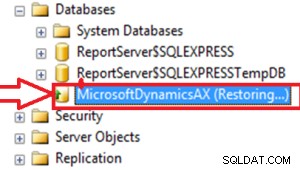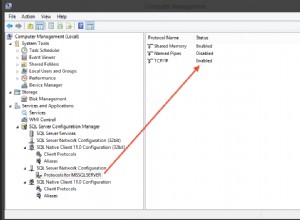Nie jestem pewien, czy to lepszy sposób, ale tak bym to zrobił:
SELECT d.id, d.word, LEFT(d.description, 100) description,
COALESCE(sum(v.vote), 0) votecount,
(CONCAT(word, description, `usage`) LIKE '%George%')
+ (CONCAT(word, description, `usage`) LIKE '%Tabuki%')
+ (CONCAT(word, description, `usage`) LIKE '%Street%')
+ (CONCAT(word, description, `usage`) LIKE '%Fighter%')
+ (CONCAT(word, description, `usage`) LIKE '%Miley%')
+ (CONCAT(word, description, `usage`) LIKE '%Cyrus%') `match`
FROM definition d
LEFT JOIN vote v ON v.definition_id = d.id
GROUP BY d.id
HAVING `match` > 0
ORDER BY `match` DESC, votecount DESC
Jeśli ciągi są wystarczająco długie, być może wielokrotne łączenie może zająć więcej czasu niż tworzenie tabeli pochodnej (mało prawdopodobne, ale warto spróbować):
SELECT id, word, description, votecount,
(fullDesc LIKE '%George%')
+ (fullDesc LIKE '%Tabuki%')
+ (fullDesc LIKE '%Street%')
+ (fullDesc LIKE '%Fighter%')
+ (fullDesc LIKE '%Miley%')
+ (fullDesc LIKE '%Cyrus%') `match`
FROM (
SELECT d.id, d.word, LEFT(d.description, 100) description,
COALESCE(sum(vote), 0) votecount, CONCAT(word, description, `usage`) fullDesc
FROM definition d
LEFT JOIN vote v ON v.definition_id = d.id
GROUP BY d.id
) s
HAVING `match` > 0
ORDER BY `match` DESC, votecount DESC




